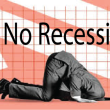by Kevin McCreadie, MBA, CFA®, CEO and Chief Investment Officer, AGF Management Ltd.
AGF’s CEO and Chief Investment Officer, Kevin McCreadie, weighs in on the potential pros and cons of another four years of President-elect Donald Trump in the White House.
Why have global equity markets rallied higher since the U.S. election?
Donald Trump’s resounding victory was a big sigh of relief for investors worried about a contested result disrupting financial markets and leading to heightened volatility and potential losses. Yet, the more important catalyst associated with Trump’s win over Vice-President Kamala Harris – and the Republicans’ sweep of U.S. Congress as well – may be the promise that comes with it of a more business-friendly regulatory agenda in Washington over the next four years.
In particular, it’s widely expected that the President-elect will enact new legislation to extend personal tax cuts due to expire in the future, while potentially lowering further existing corporate taxes. Rules and regulations governing a wide range of sectors and industries including most notably Energy, Utilities, Financials, Industrials, Materials and Telecommunications could see meaningful relief. All of this, of course, is anticipated to spur economic growth and thus drive corporate earnings higher, making risk assets like stocks even more attractive than they were heading into the election.
Is there a caveat to this growing investor optimism?
First and foremost, investors need to be aware that some of the policies being championed by President-elect Trump may not end up becoming law or, if they do, could be significantly watered down from the rhetoric, in our opinion, and less of an advantage to certain sectors and companies than markets have now priced in. For example, is the electric vehicle industry really going to be the domain of one company and bolstered by diminished oversight for autonomous driving? Or is the federal government really going to create a strategic reserve for cryptocurrencies? Sure, it’s possible, but trading on rumour can be a dangerous game and some of the outsized gains we’ve seen could potentially be reversed if actual policies don’t live up to the hype.
Similarly, some of Trump’s cabinet picks and their views on certain sectors are already having an outsized negative impact in markets. Think about future defense policies, or a move to cut federal spending, and, in the case of healthcare, uncertainty around new regulations encompassing drug discovery or pricing. These negative moves in prices may also be overdone if actual policy differs from the rhetoric, or these appointees can’t get confirmed.
What’s equally concerning about a Trump administration is that many of his policies are potentially inflationary in nature. This is especially true of his purported plans to slap 60% tariffs on all goods coming in from China and 10 to 20% tariffs on goods imported from all other countries. Indeed, if this pledge becomes reality, both U.S. companies and U.S. consumers may feel the pinch. It just depends on whether the former decides to absorb the cost of the increased levies or passes them on to the latter.
Then there’s Trump’s immigration policy, which may be inflationary to some extent as well. For instance, his pledge to deport millions of “illegals” when he takes office next January will require many businesses to attract workers to replace deported labourers. Yet, given historically low unemployment right now, doing so may require some of these same businesses to pay higher wages than would otherwise be the case. And that could end up being passed onto consumers in similar fashion to higher tariffs.
Finally, while Trump’s pro-growth agenda has been a positive for U.S. equity markets, the same cannot be said for all global equity markets – some of which are perceived “losers” in this agenda. Moreover, it should be noted that his victory has been met with some resistance from bond investors too.
Indeed, interest rates have backed up a fair bit since before the election on the risk that some of these policies – and fiscal spending that comes with them – could overheat the economy at a time when taming inflation is still a concern. Ultimately, were this the case, a slightly less optimistic viewpoint from both U.S. bond and equity investors would likely emerge in the process.
To that end, how might Trump’s pro-growth (and potentially inflationary) agenda impact U.S. monetary policy?
U.S. Federal Reserve (the Fed) Chair Jerome Powell said the day after the election that the result of it has no bearing on the central bank’s near-term decisions. But we believe it could still have a profound impact on the Fed’s plan to ease policy in the New Year, particularly if Trump’s policies do accelerate economic growth and/or fuel inflation.
In fact, Powell has also said in recent days – to the chagrin of some investors I might add – that he and many of his colleagues are in no rush to lower rates further because “the [U.S.] economy is not sending signals that we need to be in a hurry…”
That hardly means the Fed is on hold until further notice. We believe it’s still widely expected that the Fed will cut a quarter point in December. But it does suggest plans to move much less aggressively than U.S. equity markets have been anticipating since the Fed’s first rate cut this past summer and the possibility that it could slow the pace even more should economic conditions start sending signals that growth is too strong and inflation has been reignited.
Copyright © AGF Management Ltd.
The views expressed in this blog are those of the author and do not necessarily represent the opinions of AGF, its subsidiaries or any of its affiliated companies, funds, or investment strategies.
Commentary and data sourced from Bloomberg, Reuters and other news sources unless otherwise noted. The commentaries contained herein are provided as a general source of information based on information available as of November 18, 2024. It is not intended to address the needs, circumstances, and objectives of any specific investor. The content of this commentary is not to be used or construed as investment advice, as an offer to buy or sell any securities, and is not intended to suggest taking or refraining from any course of action. Every effort has been made to ensure accuracy in these commentaries at the time of publication, however, accuracy cannot be guaranteed. Market conditions may change and AGF Investments Inc. accepts no responsibility for individual investment decisions arising from the use or reliance on the information contained herein.
This document may contain forward-looking information that reflects our current expectations or forecasts of future events. Forward-looking information is inherently subject to, among other things, risks, uncertainties and assumptions that could cause actual results to differ materially from those expressed herein.
For Canadian investors: Commissions, trailing commissions, management fees and expenses all may be associated with investment fund investments. Please read the prospectus before investing. Investment funds are not guaranteed, their values change frequently, and past performance may not be repeated.
AGF Investments is a group of wholly owned subsidiaries of AGF Management Limited, a Canadian reporting issuer. The subsidiaries included in AGF Investments are AGF Investments Inc. (AGFI), AGF Investments America Inc. (AGFA), AGF Investments LLC (AGFUS) and AGF International Advisors Company Limited (AGFIA). AGFI is registered as a portfolio manager across Canadian securities commissions. AGFA and AGFUS are registered investment advisors with the U.S. Securities Exchange Commission. AGFIA is regulated by the Central Bank of Ireland and registered with the Australian Securities & Investments Commission. The term AGF Investments may refer to one or more of these subsidiaries or to all of them jointly. This term is used for convenience and does not precisely describe any of the separate companies, each of which manages its own affairs.
AGF Investments entities only provide investment advisory services or offers investment funds in the jurisdiction where such firm, individuals and/or product is registered or authorized to provide such services.
Investment advisory services for U.S. persons are provided by AGFA and AGFUS. In connection with providing services to certain U.S. clients, AGF Investments LLC uses the resources of AGF Investments Inc. acting in its capacity as AGF Investments LLC’s “participating affiliate”, in accordance with applicable guidance of the staff of the SEC. AGFA engages one or more affiliates and their personnel in the provision of services under written agreements (including dual employee) among AGFA and its affiliates and under which AGFA supervises the activities of affiliate personnel on behalf of its clients (“Affiliate Resource Arrangements”).
® ™ The “AGF” logo and all associated trademarks are registered trademarks or trademarks of AGF Management Limited and used under licence.
RO:20241119-4038185














